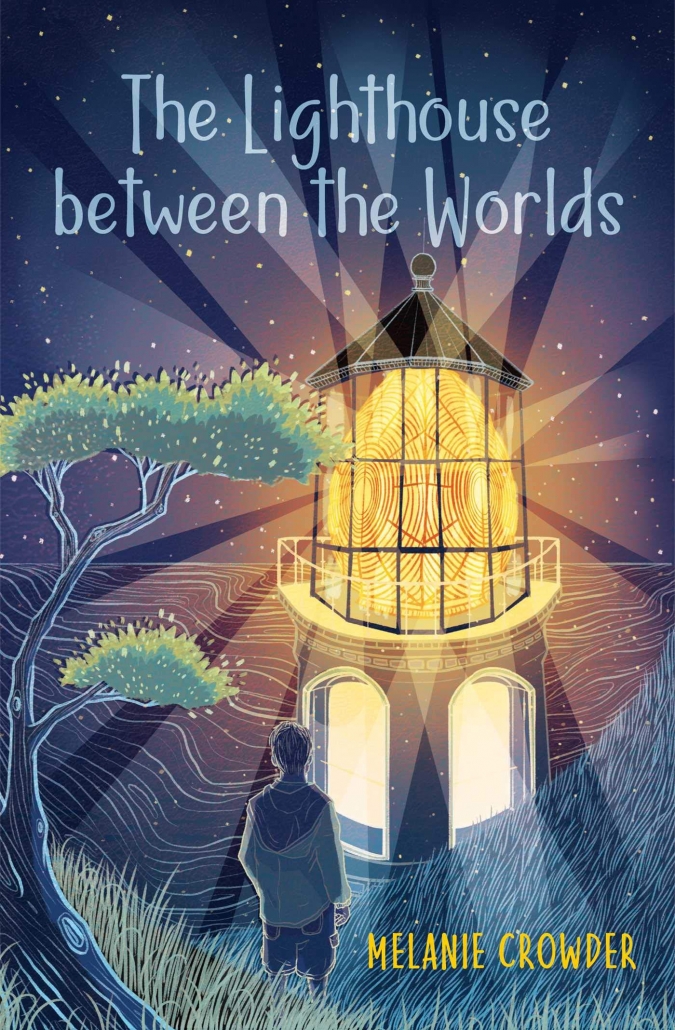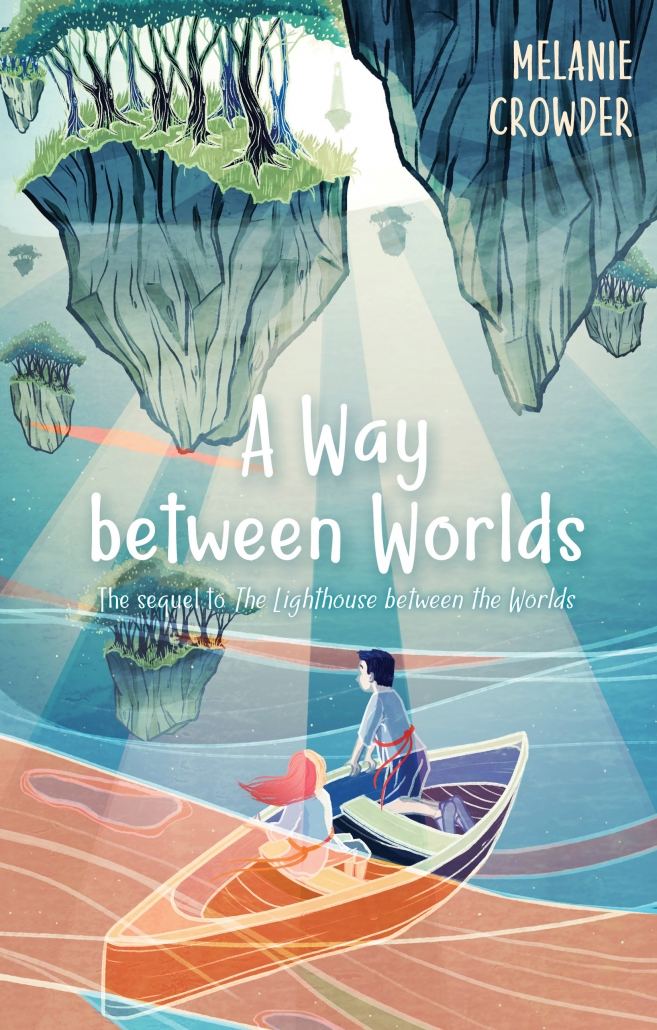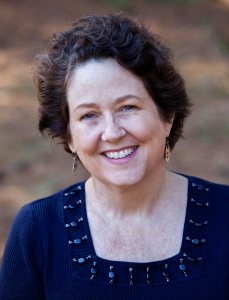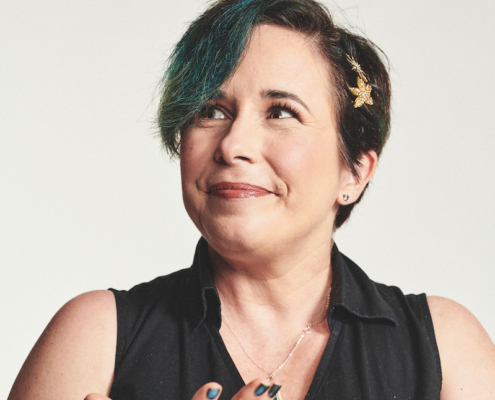New Release: THE LIGHTHOUSE BETWEEN THE WORLDS – Melanie Crowder ’11
I (Wild Things’ Contributor Robin Kirk) am a sucker for portal fantasy, secret societies, parallel worlds, and witches, so this middle-grade adventure was a natural for me. Melanie Crowder starts quiet, with a chapter that deftly sketches out the relationship between Griffin and his widowed father (no spoilers). But then it revs up until we are careening between our world and Somni to thrilling effect. This is a book that adults just may swipe away for a fun, immersive read.
Melanie Crowder is the author of several books for young readers, including Audacity, Three Pennies, An Uninterrupted View of the Sky, A Nearer Moon and Parched, as well as the new middle grade duology The Lighthouse Between the Worlds.
Melanie’s books have been awarded the Jefferson Cup, the Arnold Adoff Poetry Award, the SCBWI Crystal Kite, and the Bulletin Blue Ribbon; they have been recognized as a National Jewish Book Awards Finalist, Walden Award finalist, Colorado Book Awards Finalist, Junior Library Guild selection, YALSA Top Ten Books For Young Adults, ILA Notable Book for a Global Society, Parents’ Choice Silver Medal, BookBrowse Editor’s Choice, BookPage Top Pick, and The Washington Post Best Children’s Books for April. Her work has been listed as Best Books of the Year by Bank Street College, Kirkus Reviews, The Amelia Bloomer List, New York Public Library, Tablet Magazine, A Mighty Girl, and The Children’s Book Review.
Crowder lives under the big blue Colorado sky with her wife, two kids, and one good dog.
Tell us about The Lighthouse Between the Worlds. Where did the idea come from?
First, thank you for that amazing introduction!
This book is a world-hopping adventure that was so much fun to dream up. It may sound odd, considering the story is set on the Oregon coast, but the idea came to me while I was hiking in Colorado.
If you know where to look, you’ll come across relics of mining history in the Rockies—hundred year old rusted cans of beans, telegraph insulators, and even tiny leather shoes that could only have belonged to an infant. It’s impossible for me to walk among the ghosts of that era and not imagine what it was like to live that cold, hard life.
On one particular hike, I was in a region of the state where Nikola Tesla was active, and I got to thinking that technology must have seemed like magic when it first appeared in remote areas of the country. I thought to myself, what it if actually was? What if Fresnel lenses in lighthouses and AC currents powering mines and looking glasses on fire watchtowers really were magic?
The idea wouldn’t let me go, and this story is the result!
The craggy coast of Oregon is almost like its own character. What drew you to that location?
Oh, thank you for asking that question! I could talk about how much I love the PNW all day.
My family has lived in Oregon for six generations. When I was young, our vacations were trips to that craggy coast where we pitched tents in the sand, splashed in tide pools, hunted for agates in rocky coves, and hurled crab rings off the docks, then gleefully pulled them back up again.
In high school my family moved from the valley to the coast and it’s impossible for me to think of those moody teenage years without waves crashing against the rocks in the background. I may not live in Oregon anymore, but a huge chunk of my heart still does.
Writing about that place was pure joy. It was like coming home.
Science, particularly ideas about light and precision, are a crucial part of your story. Can you explain more about that?
I’m always hunting for metaphor, for layers of resonance in my stories. In this one, metaphor and magic and science were hopelessly intertwined. Take a look at one of those enormous old-timey Fresnel lenses and tell me there’s no magic there—I dare you.
I think that’s where science and fiction shine together, when art elevates an element of the physical world, infusing it with significance it already seemed to possess. I mean—picture fiddleheads rising from a sprawling fern. Faeries live there, they just do. Or fog in the canopy of a stand of redwoods. A spell has been cast, clearly.
All I did was look closely at light and how it travels; at glass and how it is formed, then take the leap that study had laid out for me. Sure, there was plotting and some intense work poking holes in the magic system, but simplicity and authenticity were at the very heart of the process.
Were there any unexpected hiccups along the way?
Oh, my, yes. This book is the fourth book I’ve written in collaboration with my middle grade editor. We trust each other and we really enjoy working together. So I sold this project to her on little more than an idea—a few sentences, really. And while that’s an amazing privilege to enjoy as an author, it also opens up the possibility that when I get around to actually writing the story, what comes out may be very different from what she envisioned based on the original pitch.
So, yup, before I wrote this book, I wrote an entirely different one with drastically different elements: characters, plot, magic system, you name it. A completely different book.
It’s not the most efficient way to draft a novel, but hey—my process is slightly different for every book I write. Apparently this one required restarting with a blank page. Painful? Yes. But I’m still grateful for all the process had to teach me.
You’ve also written a sequel, A Way between Worlds, what you are calling a duology. Did you start out wanting to write two books? Tell us about the challenges to continuing with the story.
Yes! A Way between Worlds just released on October 1.
Honestly, the biggest challenge for me was in gearing up to draft the second installment. I am always exhausted after I finish writing a book. Before this challenge I’d always turned from that exhaustion to the invigoration of some shiny new idea, taking advantage of that newness to help me get going again. But this time I wasn’t moving on to a new project, but back into the next iteration of an old one. So it was really all about generating my own motivation. Once I got in there and started working, the characters were a joy to rediscover. And with the worlds and magic system already established, the heavy lifting of the worldbuilding was already done.
The Lighthouse between the Worlds ends on a bit of a cliffhanger; we sold the idea as a duology so I always knew there would be two books. The amazing thing about writing something this expansive—with 8 different worlds—is that it’s never really over. I could write a prequel. I could write a sequel to A Way between Worlds. I could keep going forever!
I won’t, though. Besides, I like to think some of my young readers are already dreaming up how they would write book 3… and maybe they will.
What has been your most memorable interaction with young readers?
This past spring I visited the elementary school where I used to teach. I drove over to host an informal Q&A for a friend’s 4th grade students who had read The Lighthouse between the Worlds. Some of the best questions came from students who’d been in my ESL classes as kindergarteners—they’d gone from speaking next to no English to reading and responding to my creative work.
What brilliant kids. What bright futures.
Tell us a little bit about your background before VCFA, and how you came to decide to enter the program.
I was an accidental educator for more than a decade. I knew I had more to offer than administering the steady stream of assessments my job as a public school teacher required.
I didn’t have an undergraduate degree in literature or the understanding others had acquired by my age from writing and dreaming this dream since they were young. I was just getting started, but I knew I loved this work and I wanted to learn how to do it well. It was honestly kind of a fluke that I ended up at VCFA, but accepting that offer was the best career decision I ever made.
In order to afford the degree, I had to work full time while I was in the program, so it was an intense two years, let me tell you! And since my first book contract came the winter after I graduated, that intensity hasn’t let up.
I love this work, truly, and I hope I can hold onto the sense of wonder, delight, and gratitude that keeps me in love with it day in and day out.
What year did you graduate from VCFA and what was your class name?
I graduated in 2011 with the brilliant League of Extraordinary Cheese Sandwiches.
Was there one lecture in particular that you can recall an a-ha moment that reinforced that you belonged in the program?
I don’t think I would describe my experience with the lectures in quite that way. It was a few of my teachers and the people in my class who made me feel like I belonged. I can’t imagine the journey without them.
Could you talk about your experience in lectures or during your semester work with advisors and how it may have shaped the writing life you are living now? What about VCFA affected your career and where you are now?
I can’t talk about my experience with lectures as if it’s a thing of the past. I still regularly listen to lectures 8 years after graduation. I love when new lectures come online (ooh—summer res is up now!) It’s such a joy for me to hear my teachers’ voices and to learn from all the new faculty who have been added in the years since I left the program.
Do you have any VCFA connections that affect your career right now?
Well, that editor I mentioned earlier with whom I enjoy such a rewarding partnership? We connected when 20 pages of what would become my debut novel, Parched, won VCFA’s HMH scholarship, dropping the story on her desk. Where would I be without that opportunity?
Probably still dreaming of becoming an author.
What would you say to potential students or current students who are hoping to further their writing career?
Slow down and enjoy the journey. Relish this time when your only job is to absorb, process, and experiment. As tough as it may feel in the moment, this time is a gift.
What’s coming in the future for you and your writing life? Please let us know about any events coming up where readers could come see you.
I’ve got three things on the horizon:
I’m teaching a class on Crafting Compelling Emotion through the Writing Barn this fall.
A Way between Worlds is available now wherever books are sold.
And I’m hard at work on revisions for my next book, a YA historical fiction called MAZIE. Look for it in early 2021!
Thanks so much for having me!








